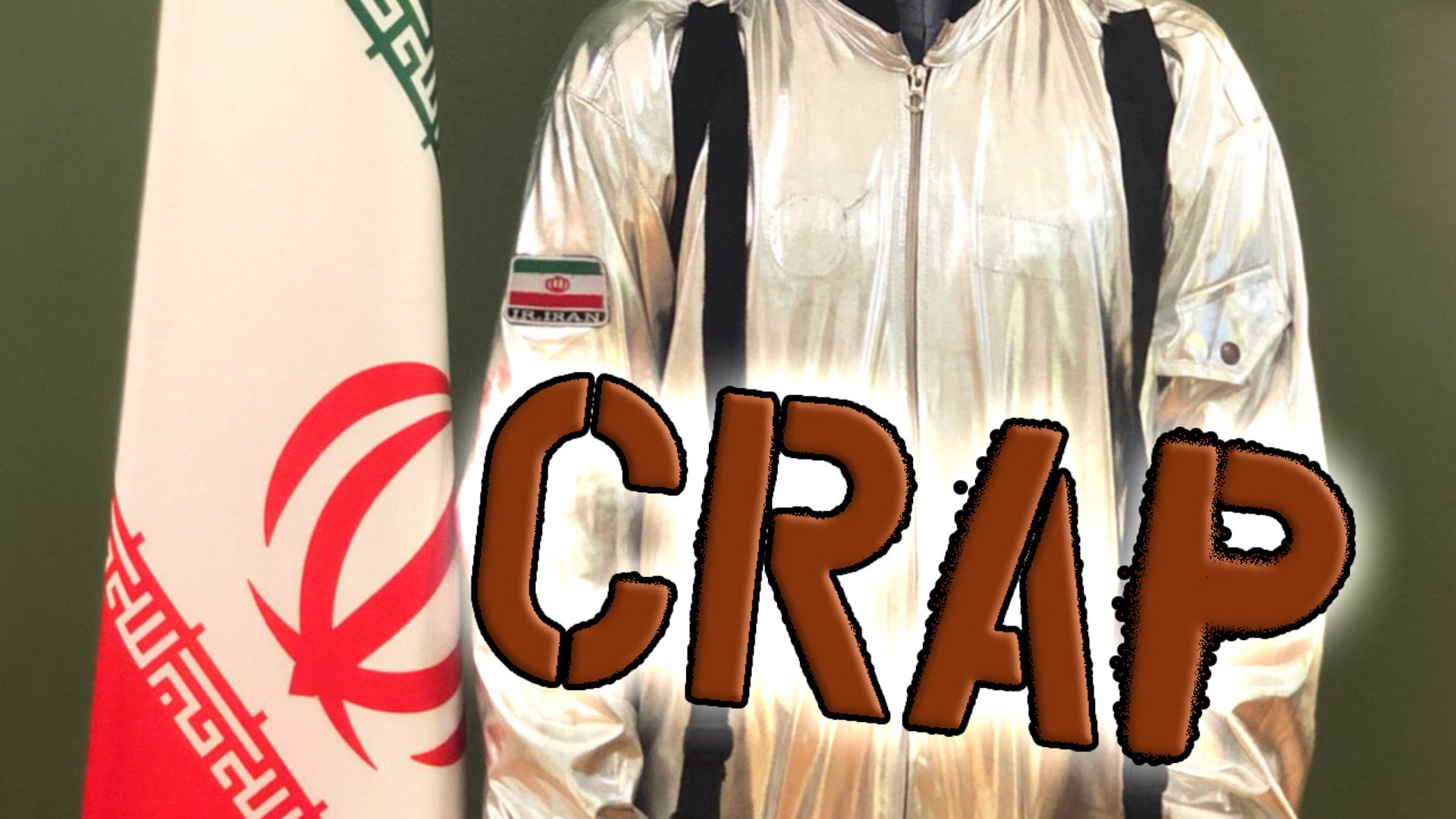The propensity of the Iranian regime to make often laughably hyperbolic claims about their military and technological achievements is nothing new, but some of the most absurd claims seem to routinely revolve around the country’s ostensible ambitions to become a power in space. Earlier this week, Iran’s Minister of Information and Communications Technology Tweeted out a picture purportedly of a spacesuit for future Iranian astronauts. Observers quickly determined that it was actually an altered Halloween costume that is readily available for purchase online.
Mohammad-Javad Azari Jahromi made the post on Twitter on Feb. 4, 2020. Jahromi previously worked in various managerial posts for Iran’s Ministry of Intelligence between 2002 and 2009 before moving into telecommunications. The U.S. government sanctioned him in November 2019, claiming that he had been directly involved in censorship of the country’s internet on behalf of the regime in Tehran. He is presently the youngest member of the cabinet of Iran’s President Hassan Rouhani.
The Tweet itself is short. “Astronaut costume #bright_future” is all it says in Farsi.
At the time of writing, it is still up, despite the many responses regarding the suit’s origins. The most important clues are a circle-shaped area on the right-hand breast of the suit and a rectangle-shaped one on the opposite side. These correspond exactly to a NASA logo and name patch seen on a Halloween costume on sale through online storefronts, such as Amazon, for around $20.

It’s unclear why Iran thought it was a good idea to display this laughably off-the-shelf costume in a serious manner. It almost seems better suited to be a claimed flight suit for child-sized pilots to go along with Iran’s laughable Q313 “stealth fighter” mockup from years ago.
That said, it is in line with other over-the-top propaganda that the Iranian regime has produced regarding its space efforts in the past. In January 2019, amid celebrations marking the 40th anniversary of the Islamic Revolution in Iran, the country’s powerful Islamic Revolutionary Guard Corps put up a billboard that absurdly implied Iran’s achievements in this realm included the development of the U.S. Space Shuttle.
Iran’ does, technically, have a manned space program, but there is no indication there anywhere close to actually sending anyone into space. Former firebrand President Mahmoud Ahmadinejad notably said he wanted to be the country’s first astronaut in February 2013. This followed what Iran claimed was a successful launch and recovery of a capsule containing a monkey the month before. State and quasi-state media heavily touted the achievement. An earlier Iranian attempt to reach this milestone had failed in 2011.
At the same time, Iran’s nascent space program, at its core, is very real. It’s certainly real enough that the U.S. government, among others, regularly accuses Iran of using it as a cover for the development of technologies for long-range ballistic missiles, including a possible future intercontinental ballistic missile design.
“Hiding beneath the layer of absurdity Western media loves so much, there is a serious development program aimed at manned suborbital flights which after passing its early stages gets frozen for financial and bureaucratic reasons,” Fabian Hinz, a research associate at the James Martin Center for Nonproliferation Studies, wrote on Twitter following the spacesuit debacle. “One should be very careful not to draw major conclusions about Iranian capabilities and intentions based on artefacts [sic; artifacts] generated by state propaganda and bureaucratic dynamics.”
Iran is in the process right now of preparing to attempt to launch another satellite into orbit aboard one of its domestically developed space launch vehicles, designs that have a decidedly mixed track record. In August 2019, U.S. President Donald Trump notably Tweeted out a U.S. satellite intelligence image of the aftermath of a failed launch attempt involving a Safir space launch vehicle. The rocket had exploded on the launch pad at what American officials refer to as “Semnan Launch Site One,” part of the Imam Khomeini Space Center, also known as the Semnan Space Center.
Another launch, involving a Simorgh space launch vehicle, had also failed in January 2019. The Simorgh has yet to reach orbit successfully, though one of them did complete a sub-orbital flight test in 2016.
Iran also just recently publicly displayed a full model of a future Soroush space launch vehicle for the first time at an exhibition in Tehran meant to highlight various technological achievements. Artwork and models of similar vehicles have been floating around for years, but this confirms that the Iranian regime is actively working on it. From the details present on the model, the design appears to be an enlarged three-stage derivative of the Simorgh that also notably adds a cluster of four rocket boosters at the bottom.
By all indications, Soroush remains in the very early stages of development. By the same token, though, work on this new space launch vehicle does seem to be very real, certainly more so than the fake spacesuit for Iranian astronauts.
Contact the author: joe@thedrive.com
